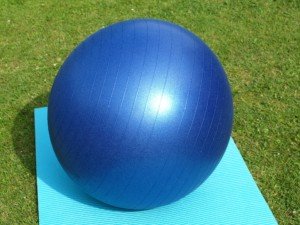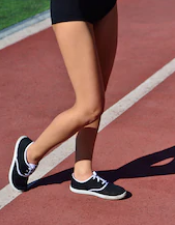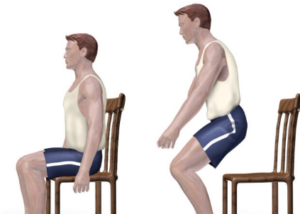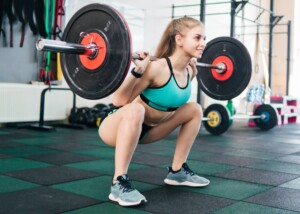Here are three simple and fun exercises to improve back squats if you have the unfortunate levers of relatively long femurs.
Bad levers do not mean that you can’t override long femurs by “strengthening your ancillaries.”
Three Exercises for Improving the Back Squat if You Have Long Femurs
Wall squat. Stand facing a wall and figure out the closest you can be to it before your knees would be touching when in a parallel squat.
You’ll need to hold onto something to get into a parallel squat to figure out the distance you need to be from the wall. Mark that distance (e.g., place yardstick parallel to wall).
Face wall and begin squatting, making sure that there’s something nearby you can hold onto.
The objective is not to let your head or face pitch into the wall, though it’s fine if your face (or side of) grazes it as you lower. You just don’t want to lose control and pitch forward.
You will notice several things:
1) This really forces your lower back to maintain an arch
2) It stretches the back of the lower leg/Achilles tendon, and
3) As you keep doing this, you’ll find you can eventually eliminate holding onto something with your hands, and instead just allow your palms to graze the wall.
With that third point, the arms can be straight but somewhere between horizontal and vertical, palms against wall.
The goal then would be to eliminate the grazing and not touch at all. Another goal is to sink as deep as possible.
You’ll notice that as you near the bottom, you’ll lose the lower back arch. This will happen to even a person with short femurs.
I don’t recommend going this far, because you want to teach your body to always have a low back arch.
Wall squats will force your body to get good at maintaining a low back arch past a parallel position.
As you improve with wall squats, stand a little closer to the wall. This will encourage less forward positioning of the knees, but realize that your proportions will have the final say-so.
The second exercise for improving the back squat if you have long femurs is what I call staircase squats.
Ideally, there’s a solid wall on either side of you. Even more ideally, you can sit on the steps where at least one of the walls ends and you can use that for support by curving your palm and fingers around it.
- Sit on a step.
- Position feet on the next step, as you would in a back squat.
- Place heels against the back of the step.
- Arch lower back and shift forward to get knees past the feet (maximize dorsiflexion in ankles).
Every time you begin this exercise, note if your shoulder is right over your midfoot.
This is key, because once you achieve this, you’re ready to remove your butt from the step — while keeping heels on it.
The beauty of this exercise is that you never have to worry about falling backwards. The wall allows you to use something for balance without gripping it.
The objective is to eliminate using the wall as you maintain the squat position, butt just a tiny bit off the step.
Hold the squat till you fatigue, then sit and rest. Repeat several times. Concentrate on maintaining the lower back arch.
Make sure feet don’t drift outward any more than you desire, as this can happen without you realizing it.
Working off the next step can be taxing, so alternate between that and the step after the next step.
In fact, beginners may want to use only the second step down, rather than the next step.
This exercise will increase dorsiflexion and train the lower back to keep the arch in those with the longest femurs.
The third exercise for improving the back squat if you have long femurs involves the stability ball, BUT it’s not what you think. There is NO wall involved.

Use a ball that when you sit on it, your femurs are either parallel or below parallel.
If femurs are above parallel, use a smaller ball.
- Position feet as you would in a back squat.
- Arch lower back.
- Align shoulders vertically with midfoot.
- Make sure you’re dorsiflexed as much as possible (never force dorsiflexion; just achieve your natural limit).
You are now in position for a back squat; because the shoulder and midfoot are aligned, you should be able to push the ball aside and hold this position.
Do that and hold until fatigue sets in. Rest and repeat several more times.
Those with long femurs will find that these exercises will enhance your ancillaries: the assistive parts of your body in a back squat. They are the 1) lower back, 2) ankles, 3) hips and 4) shins.
Long femurs + ancillary training + wide stance and you have it made!
When doing these exercises, always wear athletic footwear, and do not force anything or over-train because the tissue around the ankle joint can easily be overstretched.



























